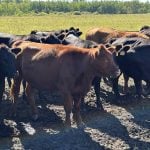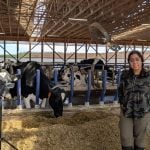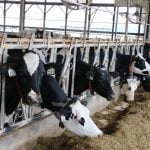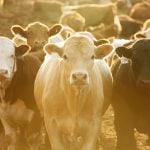Compared to last week, western Canadian feeder cattle markets were relatively unchanged. Lower flesh yearlings appeared to trade $2-$3 higher in certain pockets of Alberta but replacements carrying excessive butter experienced severe discounts of $6 to as much as $10 in some cases.
October and December live cattle futures made fresh contract highs, which underpinned nearby cash values. April 2022 futures finished the week just under $131, which rejuvenated buying interest on 5- and 6-weight cattle.
The buying crowd is rather small these days, with major operators setting the tone. Many cattle feeders are absent given the strong feed grain prices and prolonged period of negative margins. We’ve gone through 12 to 18 months of red ink in the finishing sector and it’s starting to show on feeder cattle demand. Much of Saskatchewan received much-needed precipitation over the past week but Alberta remains on the drier side. Grazing season is right around the corner. Demand for grassers isn’t surfacing this spring, unless cattle are placed in a backgrounding lot. Yearlings are going to be red hot this fall and finishing feedlots are securing numbers because there will be profitability next winter.
Read Also
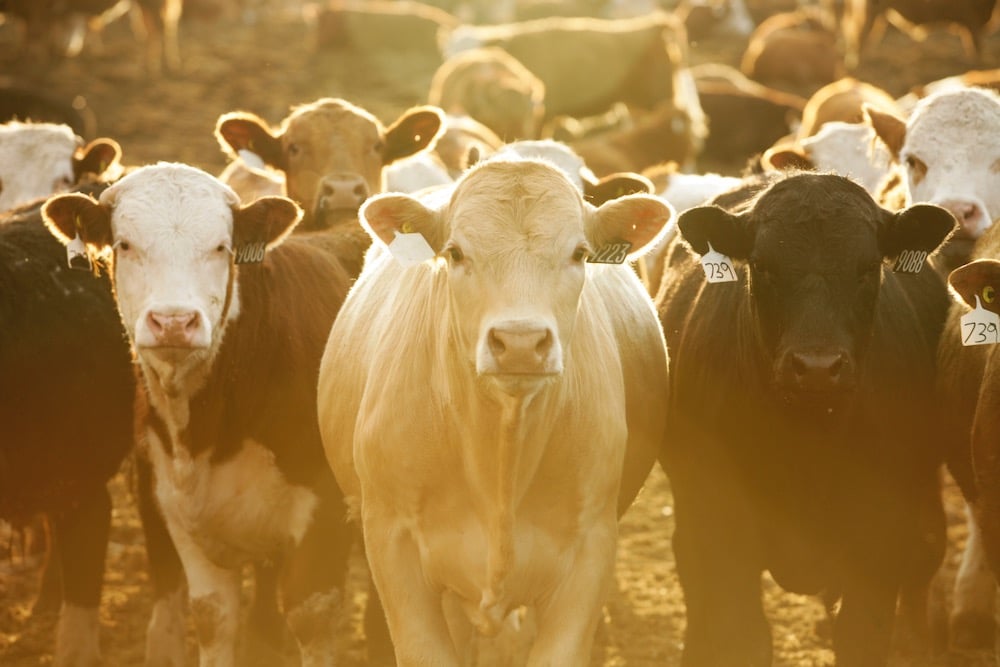
U.S. livestock: Cattle futures drop on Trump call for lower prices
Cattle futures on the Chicago Mercantile Exchange dropped sharply on Wednesday, reacting to comments from United States President Donald Trump…
Early in the week, there was a larger group of mixed steers weighing just under 950 lbs. that dropped the gavel at $174 in central Alberta; larger-frame lower-flesh steers weighing 820 lbs. were valued at $189 in the same region. North of Calgary, Simmental-blended heavier-flesh heifers averaging 850 lbs. were quoted at $160 but in southern Alberta, Angus-based heifers with lower flesh averaging 840 lbs. were valued at $168. A small group of medium-frame Hereford steers averaging 820 lbs. were reported at $178 in the Lethbridge area.
There was limited activity in Saskatchewan and Manitoba this past week. In central Alberta, black steers on full health program on light grain diet weighing 675 lbs. were quoted at $208; red heifers with similar characteristics weighing 665 lbs. were quoted at $190. In southern Alberta, Simmental-based weaned steers weighing 550 lbs. on full health program on a light grain diet were valued at $235 landed in the feedlot; similar-quality and -weight heifers were quoted at $201.
According to the U.S. Department of Agriculture (USDA), farmers south of the border intend to plant 91.1 million acres of corn this year, up only 325,000 acres from last year. Corn futures were limit-up on Wednesday and feeder futures were down sharply. The focus is turning to upcoming production and the market cannot afford a crop problem with U.S. corn or Canadian barley. Feedlots are booking their feed grains and then buying feeder cattle. If it doesn’t pencil from the start, they’re just not taking the risk.
— Jerry Klassen manages the Canadian office of Swiss-based grain trader GAP SA Grains and Produits Ltd. and is president and founder of Resilient Capital, specializing in proprietary commodity futures trading and market analysis. Jerry consults with feedlots on risk management and writes a weekly cattle market commentary. He can be reached at 204-504-8339 or via his website at ResilCapital.com.










